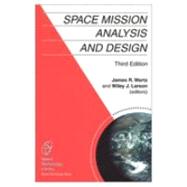|
ix | ||||
| Preface | xvii | ||||
|
1 | (18) | |||
|
1 | (6) | |||
|
7 | (5) | |||
|
12 | (3) | |||
|
15 | (4) | |||
|
19 | (28) | |||
|
21 | (11) | |||
|
32 | (5) | |||
|
37 | (1) | |||
|
38 | (9) | |||
|
47 | (26) | |||
|
48 | (1) | |||
|
49 | (10) | |||
|
59 | (10) | |||
|
69 | (4) | |||
|
73 | (22) | |||
|
74 | (6) | |||
|
80 | (10) | |||
|
90 | (3) | |||
|
93 | (2) | |||
|
95 | (36) | |||
|
98 | (12) | |||
|
110 | (7) | |||
|
117 | (6) | |||
|
123 | (8) | |||
|
131 | (28) | |||
|
132 | (9) | |||
|
141 | (5) | |||
|
146 | (7) | |||
|
153 | (2) | |||
|
155 | (4) | |||
|
159 | (44) | |||
|
160 | (3) | |||
|
163 | (13) | |||
|
176 | (3) | |||
|
179 | (4) | |||
|
183 | (5) | |||
|
188 | (15) | |||
|
203 | (38) | |||
|
203 | (18) | |||
|
221 | (20) | |||
|
241 | (60) | |||
|
245 | (4) | |||
|
249 | (6) | |||
|
255 | (11) | |||
|
266 | (12) | |||
|
278 | (13) | |||
|
291 | (10) | |||
|
301 | (52) | |||
|
304 | (4) | |||
|
308 | (6) | |||
|
314 | (4) | |||
|
318 | (18) | |||
|
336 | (3) | |||
|
339 | (14) | |||
|
353 | (166) | |||
|
354 | (27) | |||
|
381 | (14) | |||
|
395 | (12) | |||
|
407 | (21) | |||
|
428 | (31) | |||
|
459 | (38) | |||
|
497 | (22) | |||
|
519 | (14) | |||
|
521 | (1) | |||
|
521 | (2) | |||
|
523 | (1) | |||
|
524 | (5) | |||
|
529 | (1) | |||
|
530 | (3) | |||
|
533 | (54) | |||
|
534 | (9) | |||
|
543 | (7) | |||
|
550 | (20) | |||
|
570 | (5) | |||
|
575 | (12) | |||
|
587 | (34) | |||
|
590 | (10) | |||
|
600 | (11) | |||
|
611 | (5) | |||
|
616 | (5) | |||
|
621 | (24) | |||
|
623 | (1) | |||
|
624 | (5) | |||
|
629 | (7) | |||
|
636 | (6) | |||
|
642 | (3) | |||
|
645 | (40) | |||
|
649 | (11) | |||
|
660 | (13) | |||
|
673 | (12) | |||
|
685 | (34) | |||
|
687 | (1) | |||
|
688 | (3) | |||
|
691 | (17) | |||
|
708 | (8) | |||
|
716 | (3) | |||
|
719 | (26) | |||
|
720 | (3) | |||
|
723 | (12) | |||
|
735 | (10) | |||
|
745 | (38) | |||
|
745 | (20) | |||
|
765 | (18) | |||
|
783 | (38) | |||
|
784 | (7) | |||
|
791 | (4) | |||
|
795 | (9) | |||
|
804 | (7) | |||
|
811 | (10) | |||
|
821 | (32) | |||
|
821 | (19) | |||
|
840 | (13) | |||
|
853 | (30) | |||
|
858 | (5) | |||
|
863 | (6) | |||
|
869 | (2) | |||
|
871 | (2) | |||
|
873 | (8) | |||
|
881 | (2) | |||
|
883 | (40) | |||
|
884 | (4) | |||
|
888 | (1) | |||
|
889 | (5) | |||
| APPENDICES | |||||
|
894 | (3) | |||
|
897 | (5) | |||
|
902 | (2) | |||
|
904 | (4) | |||
|
908 | (6) | |||
|
914 | (9) | |||
| Index | 923 |








